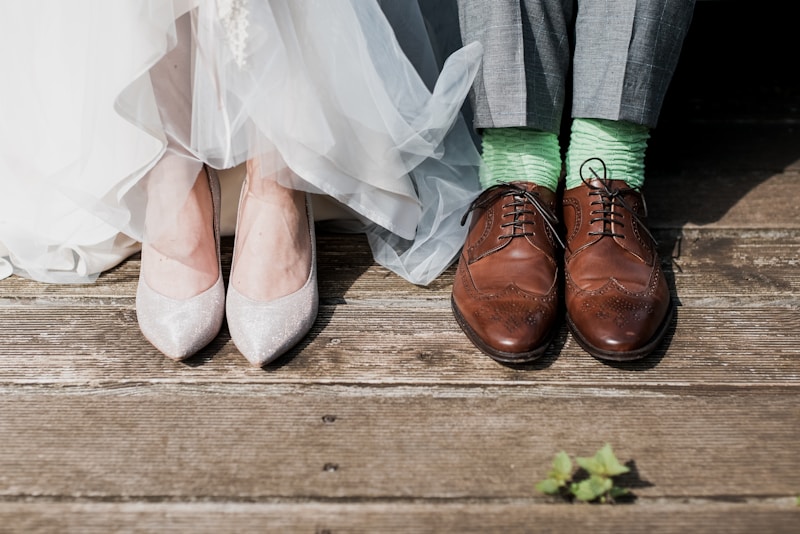Sizing Up: Making a Wedding Dress Fit Just Right
Introduction
Finding the perfect wedding dress is one of the most memorable experiences for any bride-to-be. However, it’s not just about the style, fabric, or embellishments; the fit of the wedding dress plays a crucial role in making you feel confident and beautiful on your special day. In this article, we will delve into the intricacies of sizing up a wedding dress, ensuring it fits just right, and addressing common concerns brides may have. Let’s take a look at how to achieve that flawless fit!
Understanding Wedding Dress Sizes
Wedding dress sizes can differ remarkably from regular clothing sizes, which can lead to confusion. When shopping for wedding dresses, it’s crucial to understand the sizing charts of various designers. Commonly, wedding dresses run smaller than everyday wear. For instance, if you typically wear a size 8 in street clothing, you might need a size 10 or 12 in a wedding dress.
Key Factors Influencing Wedding Dress Size
Several factors can influence the size of your wedding dress:
- Designer Variations: Each designer has its own size chart; always refer to it.
- Dress Style: A-line, mermaid, and ball gown dresses all fit differently.
- Body Shape: Your unique body shape will also affect the fit; consider this when selecting a silhouette.
- Fabric Stretch: Fabrics like satin have less give than materials like chiffon, which can impact sizing decisions.
Sizing Up Your Dress
Once you've selected a wedding dress style, the next step is to ensure it fits perfectly. Here are some essential tips for sizing up:
1. Know Your Measurements
The first step in determining the right fit for your wedding dress is to know your accurate body measurements. Use a measuring tape to check the following:
- Bust: Measure around the fullest part of your bust.
- Waist: Measure around the smallest part of your waist.
- Hip: Measure around the widest part of your hips.
- Height: Measure from the top of your head to the floor (consider the shoes you will wear).
Using these measurements will help you find the most accurate size according to the designer’s charts.
2. Consider Custom Alterations
If you are struggling to find the perfect fit, consider having a dress custom-made or altered. A good tailor can make specific adjustments to ensure your dress fits like a glove. Common alterations include:
| Type of Alteration | Description |
| Taking In | Narrowing the dress to fit closely to the body. |
| Letting Out | Expanding the dress for additional room. |
| Hem Adjustment | Shortening or lengthening the dress to the desired length. |
| Strap Adjustment | Changing the length or position of the straps for comfort. |
3. Try It On!
Never underestimate the power of a fitting session! Schedule several try-on appointments and bring along the shoes and undergarments you plan to wear on your wedding day. This will help you visualize the complete look while ensuring that the dress fits well when you wear it with your wedding day attire.
The Importance of Comfort
Comfort should be a top priority when selecting your wedding dress. A gown that looks stunning but feels restrictive may hinder your enjoyment on your big day. Here are ways to enhance comfort:
- Choose the Right Fabric: Select a breathable fabric, especially for summer weddings.
- Consider the Silhouette: A-line or flowy dresses typically offer more room and comfort.
- Ensure Proper Support: A well-fitted bodice can provide much-needed support.
Planning for Alterations
It’s advisable to factor in time for alterations when purchasing your dress. Schedule your fittings at least a few months before your wedding day. This allows ample time for adjustments, especially if multiple fittings are necessary. Keep in mind that last-minute alterations may lead to increased stress, so plan ahead.
Documenting Your Journey
Keeping track of your measurements, fitting appointments, and any alterations made is vital. Document your journey in a wedding planning binder. This can be invaluable for future reference or should you need to purchase additional pieces like bridesmaid dresses or a second gown.

Common Questions About Wedding Dress Sizing
As you navigate through finding the perfect fit, you may have some lingering questions. Here are answers to a few common ones:
1. What do I do if my dress is too big or too small?
If your dress is too big, a tailor can take it in. If it’s too small, some fabrics can be let out, but this has its limits, making early measurements crucial.
2. How many fittings do I need?
Most brides typically have two to three fittings. The first is to observe the overall fit, the second for making adjustments, and the last to ensure everything falls into place perfectly.
3. Can I wear a corset or shapewear?
Absolutely! If you feel more comfortable wearing shapewear or a corset, do bring it to your fittings. This allows your tailor to consider how it affects the overall fit of your dress.
Conclusion
In summary, finding the perfect fit for your wedding dress is a blend of understanding sizes, measuring accurately, and being open to custom alterations. Remember that comfort is as important as appearance—choose a dress that you can move in and feel confident wearing. Timing matters too; allow plenty of time for alterations well before your wedding day. With the right approach, your wedding dress can fit just right, making your special day even more memorable!
By considering these factors, you can ensure a beautiful and comfortable fit as you walk down the aisle, radiating joy and confidence. Happy dress shopping!